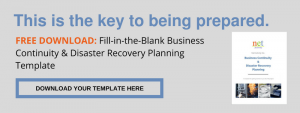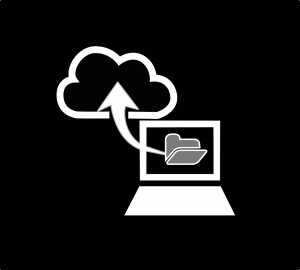Want To Make Sure Your Business Is Protected From A Data Disaster?
Losing access to your business’s data in this day and age could very well mean losing everything. That means that as data becomes an increasingly important commodity to businesses of all types and sizes, so does having a plan for if or when your business experiences a data disaster.
The thought of protecting your business against a data disaster might be daunting, but don’t worry. By following the steps listed below in this article, you can make sure that your business is ready to take on the challenge.
However, before we actually get into those steps, there is one distinction you should understand: the difference between a business continuity plan and a disaster recovery plan. A business continuity plan is primarily proactive, in that it is a strategy by which a business can continue to operate no matter what kind of disaster or setback befalls it. A disaster recovery plan is primarily reactive and has to do with how a business acts immediately following a disaster of some sort – in this case, a data disaster.
So, now that we’re clear on a disaster recovery plan, here are the steps your business can take to create one that works for you and your employees.
Step 1: Rally The Troops And Assess Your Equipment
In the fight against data disasters, everyone has to be on board. Otherwise, there will always be holes in your defense plan. That’s why executive buy-in – getting everyone in the company, from the CEO to the entry-level employees – is crucial. You need everyone to collaborate cross-functionally to fully protect your business.
From there, you need to thoroughly analyze each of your business’s systems, applications, and data sets, as well as how they’re physically accessed, to suss out any potential vulnerabilities. Then you should determine which systems are absolutely critical to the operation of your business and for getting products and services to your customers. These are the functions that will need to stay up and running, even after a data disaster.
Step 2: Create Your Disaster Recovery Strategy
Once you have everyone on board and an understanding of your equipment and assets (as well as their vulnerabilities), it’s time to actually formulate your disaster recovery plan. To do this, you should take a look at your budget, resources, tools, and partners in this endeavor. When you understand how long it takes your business to get back online and the cost of doing so, you’ll have a good idea of how to move forward.
Step 3: Test Your Strategy
No great plan is complete without first testing it to see if it will work. Put your disaster recovery plan through a trial run to see how quickly your team responds to solve the problem and see if any improvements need to be made to the process. Then, by the time an actual data disaster occurs, your business will know how to shut it down and keep running with no problem at all.
While the steps themselves aren’t difficult to understand, preparing your business to combat data disasters takes a lot of work. In the end, though, the work is worth it if it means protecting your data. As a recap, here are the four main action steps that you need to take in formulating a disaster recovery plan:
- Get executive buy-in for creating a disaster recovery plan.
- Analyze and evaluate your business’s systems, applications, and data to understand how they could be impacted.
- Find out which systems you need to keep running and prioritize them during the fallout of the data disaster.
- Test your plan before you actually need to put it into action.
Follow these steps, and your business’s data will be safe from any threat that comes your way.










